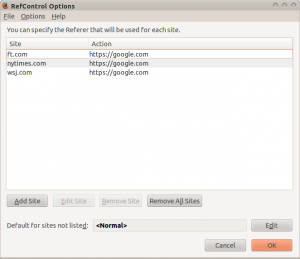So the other day I performed an upgrade of MySQL on a linode and notice that it wont start if I kept my old my.cnf file.
[11:47:06] user@linode1: ~ $ echo 'SHOW VARIABLES LIKE "%version%";' | mysql -u username -ppassword | grep innodb
innodb_version 5.5.31
[11:47:20] user@linode1: ~ $
131022 08:17:56 mysqld_safe Starting mysqld daemon with databases from /var/lib/mysql
131022 8:17:56 [ERROR] An old style --language value with language specific part detected: /usr/share/mysql/english/
131022 8:17:56 [ERROR] Use --lc-messages-dir without language specific part instead.
131022 8:17:56 [Note] Plugin 'FEDERATED' is disabled.
131022 8:17:56 InnoDB: The InnoDB memory heap is disabled
131022 8:17:56 InnoDB: Mutexes and rw_locks use GCC atomic builtins
131022 8:17:56 InnoDB: Compressed tables use zlib 1.2.7
131022 8:17:56 InnoDB: Using Linux native AIO
131022 8:17:56 InnoDB: Initializing buffer pool, size = 128.0M
131022 8:17:56 InnoDB: Completed initialization of buffer pool
131022 8:17:56 InnoDB: highest supported file format is Barracuda.
131022 8:17:56 InnoDB: Waiting for the background threads to start
131022 8:17:57 InnoDB: 5.5.31 started; log sequence number 1678395
131022 8:17:57 [ERROR] /usr/sbin/mysqld: unknown variable 'master-host=192.168.140.120'
131022 8:17:57 [ERROR] Aborting
Thing is the replication entries in my.cnf need to be removed/commented out and salve needs to be set up from MySQL console.
So here is my new my.cnf.
[11:34:25] xavi@linode1: ~ $ sudo grep -v “^#” /etc/mysql/my.cnf | grep -v “^$”
[client]
port = 3306
socket = /var/run/mysqld/mysqld.sock
[mysqld_safe]
socket = /var/run/mysqld/mysqld.sock
nice = 0
[mysqld]
server-id = 2
user = mysql
pid-file = /var/run/mysqld/mysqld.pid
socket = /var/run/mysqld/mysqld.sock
port = 3306
basedir = /usr
datadir = /var/lib/mysql
tmpdir = /tmp
language = /usr/share/mysql/english
skip-external-locking
bind-address = 192.168.137.234
key_buffer = 16M
max_allowed_packet = 16M
thread_stack = 128K
thread_cache_size = 8
myisam-recover = BACKUP
query_cache_limit = 1M
query_cache_size = 16M
expire_logs_days = 10
max_binlog_size = 100M
[mysqldump]
quick
quote-names
max_allowed_packet = 16M
[mysql]
[isamchk]
key_buffer = 16M
!includedir /etc/mysql/conf.d/
[11:34:37] xavi@linode1: ~ $
We load the above file or similar depending on your configuration. Now to configure slave we log into the MySQL CLI.
mysql> STOP SLAVE;
mysql> CHANGE MASTER TO MASTER_HOST=’192.168.140.120′, MASTER_USER=’replication-user’, MASTER_PASSWORD=’password’, MASTER_LOG_FILE=’mysql-bin.000747′, MASTER_LOG_POS=75797;
mysql> START SLAVE;
[/text]
That’s it.
